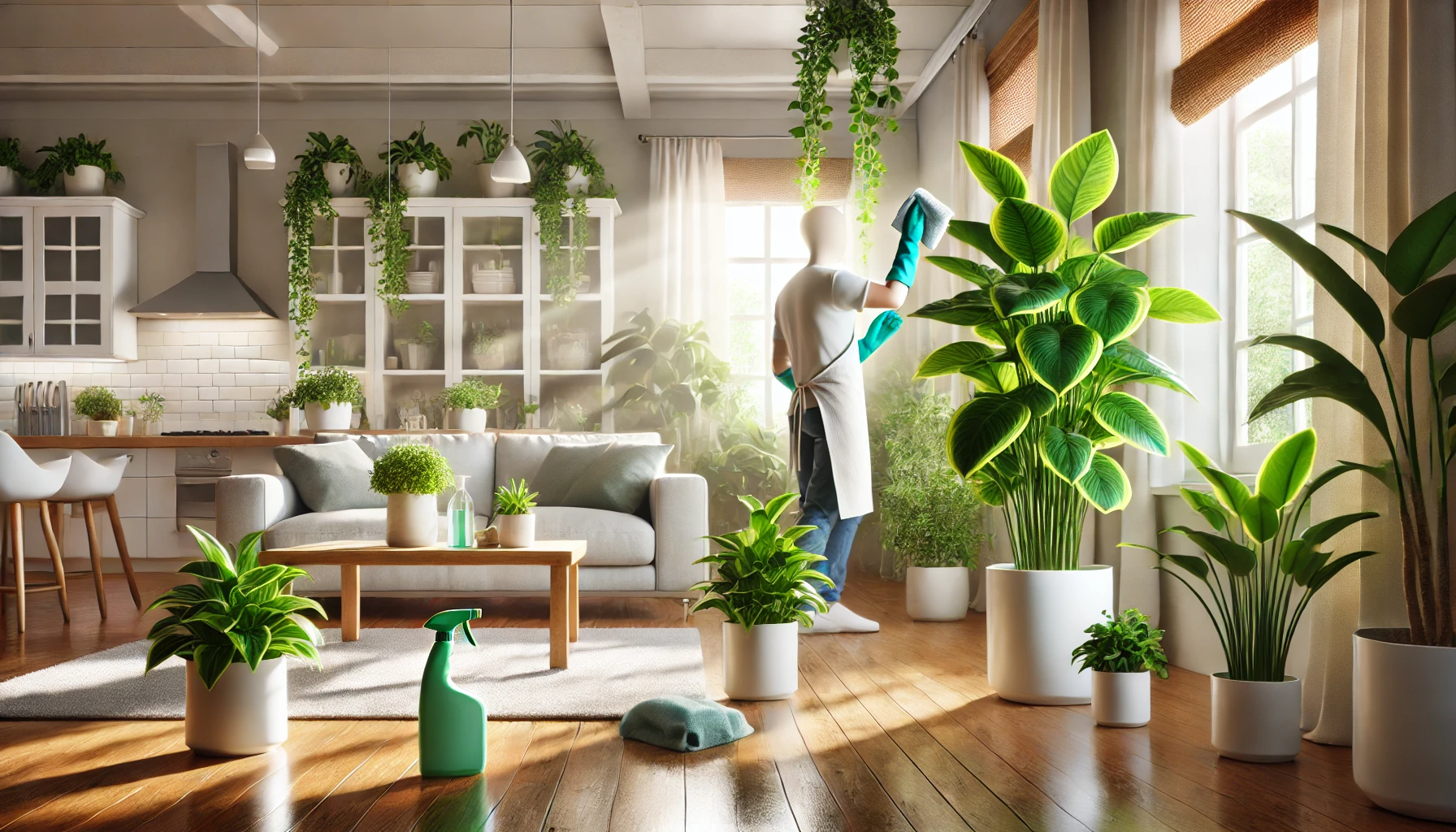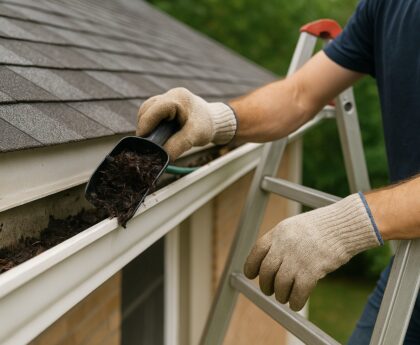- Introduction: The Connection Between Clean House Plants and a Clean Home
- Why Cleaning House Plants is Important for a Clean Home
- Essential Supplies for Cleaning House Plants
- Step-by-Step Guide: How to Clean House Plants Properly
- How Clean House Plants Contribute to a Clean Home
- Tips for Maintaining a Clean Home with House Plants
- Common Mistakes to Avoid When Cleaning House Plants
- FAQs: Clean House Plants and a Clean Home
- Conclusion: Achieving a Clean Home with Healthy House Plants
Introduction: The Connection Between Clean House Plants and a Clean Home
Keeping clean house plants and a clean home is essential for a healthy living space. House plants add life, beauty, and a sense of calm to any room. But just like your home, plants need regular cleaning to stay in good condition. When house plants are dusty, they cannot filter air well, which affects the air quality inside your home.
Clean house plants help improve air quality by removing toxins and producing fresh oxygen. This process makes your home healthier. Clean plants are also less likely to attract pests or develop mold. A clean home feels more inviting, and it also helps reduce stress. Clean house plants add to this feeling, making the home look and feel fresher.
To have a healthy home environment, it is important to maintain both clean house plants and a clean home. Doing this not only keeps your living space tidy but also supports overall well-being.
Why Cleaning House Plants is Important for a Clean Home
House plants can collect dust, dirt, and even pests over time. When this happens, it can lower the air quality in your home. Dust on plant leaves can block light from reaching the plant, making it harder for the plant to photosynthesize and produce oxygen. This reduces the plant’s ability to purify the air, leading to stale or polluted indoor air.
Clean house plants are healthier. When the leaves are free of dirt and dust, they can absorb light better and grow well. Healthy plants improve the atmosphere of your home, making it feel more vibrant and fresh. They also help create a calming environment, which is good for reducing stress.
Cleaning house plants also prevents the spread of allergens. Dust and pollen can build up on the leaves, causing allergies for some people. When plants are regularly cleaned, these allergens are removed, creating a cleaner home environment. By keeping both your house plants and home clean, you create a healthier space for yourself and your family.
Essential Supplies for Cleaning House Plants
Before you start cleaning house plants, gather the right supplies. Having the right tools makes the cleaning process easy and effective. Here is a list of necessary supplies:
- Soft Cloths or Microfiber Cloths: These are perfect for gently wiping dust off the leaves. They are soft and do not damage the delicate plant surfaces.
- Spray Bottle with Lukewarm Water: A spray bottle filled with lukewarm water helps rinse the leaves and remove dirt. Lukewarm water is gentle on plants and helps clean effectively.
- Mild Soap or Plant-Safe Cleaning Solution: For tougher stains or pest residue, use mild soap or a cleaning solution designed for plants. Make sure it is safe for use on leaves and won’t harm the plant.
- Soft Brush or Toothbrush for Stubborn Dirt: A soft brush or an old toothbrush can help clean the edges of leaves or stubborn dirt that the cloth cannot reach.
- Scissors or Pruning Shears for Trimming Dead Leaves: These tools help you cut away yellow or dead leaves, which improves the plant’s health and overall appearance.
With these cleaning supplies, you can keep your house plants healthy and your home clean. Be gentle while cleaning to avoid damaging the leaves, and always use plant-safe products.
Step-by-Step Guide: How to Clean House Plants Properly
Keeping house plants clean is simple when you follow these steps. Regular cleaning helps your plants stay healthy and makes your home look fresh. Here is how you can clean house plants properly:
Step 1: Dust the Leaves
- Use a soft, damp cloth to gently wipe off dust from the leaves.
- Hold each leaf with one hand to support it, then wipe the top and bottom gently with the damp cloth.
- Be careful not to press too hard, as this can damage the leaves.
Step 2: Rinse the Plants
- Use a spray bottle filled with lukewarm water to mist the leaves.
- Lightly spray the leaves from top to bottom, focusing on areas where dust and dirt are more visible.
- This helps remove dirt that the cloth may have missed and adds moisture to the leaves, which is good for the plant.
Step 3: Use Mild Soap for Tough Stains
- For tougher dirt or pest residue, mix a small amount of mild soap with water.
- Dip a soft cloth in the solution and gently clean the affected areas of the leaves.
- Avoid getting soap on the soil or soaking the leaves, as too much soap can harm the plant.
Step 4: Trim Dead Leaves
- Use scissors or pruning shears to cut away any yellowed, brown, or dead leaves.
- Removing dead leaves not only improves the plant’s appearance but also helps it focus energy on healthy growth.
By following these steps, you can maintain clean house plants and a clean home. Regular cleaning promotes healthier plants and a fresher environment indoors.
How Clean House Plants Contribute to a Clean Home
Clean house plants play a big role in maintaining a clean home. They do more than just look pretty—they help create a healthier living space.
Air Filtration and Improved Air Quality
- Clean house plants filter the air by removing toxins like formaldehyde, benzene, and carbon monoxide. These harmful substances can come from furniture, paint, and cleaning products.
- Plants absorb these toxins through their leaves, making the indoor air fresher and healthier. When the leaves are free of dust, they can do this job better, improving overall air quality in the home.
A Fresher and More Inviting Home
- Clean plants make your home look fresh and inviting. Shiny, dust-free leaves add vibrancy to any room, making the space feel lively and well-maintained.
- Regularly cleaned house plants are more likely to grow strong and lush, which adds to the beauty of your home.
Reduced Indoor Allergens
- Dust and pollen can settle on plant leaves, which can trigger allergies if not removed. Regular cleaning of house plants reduces these allergens, making your home a safer environment.
- By keeping your house plants clean, you contribute to a cleaner home, a fresher atmosphere, and improved well-being for everyone inside.
Clean house plants are not just about appearance—they are key to a cleaner, healthier home. Regular maintenance of your plants helps them thrive and keeps your living space feeling fresh and inviting.
Tips for Maintaining a Clean Home with House Plants
To keep your home clean and fresh, it is important to maintain both the house plants and their surroundings. Here are some tips to help you keep a clean home with house plants:
Keep Plants in the Right Location
- Place your house plants where they get good airflow and enough light. Proper airflow helps prevent dust buildup, and sunlight supports plant growth.
- Areas near windows or places with indirect sunlight are ideal. Proper positioning keeps your plants healthy, making them more effective in purifying the air.
Clean the Pot and Soil Area
- Wipe down the pots regularly to remove dust and dirt that can collect on the surface.
- Remove fallen leaves and other debris from the soil to prevent mold or bacteria growth. This keeps the plant healthy and the area around it clean.
- Check the base of the pot for excess moisture, as it can lead to mildew or mold, affecting the cleanliness of your home.
Use Indoor Air-Purifying Plants
- Include air-purifying plants like snake plants, spider plants, and peace lilies. These plants naturally clean the air by absorbing toxins and releasing fresh oxygen.
- Having air-purifying plants reduces indoor pollutants, helping maintain a cleaner and healthier home.
By following these tips, you can create a cleaner, healthier living space while keeping your house plants thriving. Regular care ensures that your plants contribute to a fresh and inviting atmosphere inside your home.
Common Mistakes to Avoid When Cleaning House Plants
Cleaning house plants may seem easy, but there are a few common mistakes that can harm them. Here are some mistakes to avoid to ensure your plants stay healthy:
Using Harsh Chemicals
- Avoid using harsh chemicals or general household cleaners on house plants. These products can damage the delicate leaves, causing burns, discoloration, or even killing the plant.
- Use only plant-safe cleaning solutions or mild soap mixed with water to gently clean the leaves.
Overwatering During Cleaning
- While rinsing the leaves, be careful not to drench the soil. Overwatering can cause root rot, which is one of the leading causes of plant death.
- When cleaning, focus on the leaves, and keep the soil as dry as possible. If water accidentally drips into the soil, make sure it drains properly.
Neglecting to Clean the Underside of Leaves
- Pests often hide on the undersides of leaves, feeding on the plant and spreading diseases. If you do not clean the undersides, pests like spider mites and aphids can multiply quickly.
- When wiping the leaves, gently lift each one and clean the underside thoroughly to remove dust and pests.
By avoiding these mistakes, you can ensure that your house plants remain clean and healthy. Proper cleaning helps them thrive and keeps your home environment fresh and inviting.
FAQs: Clean House Plants and a Clean Home
Here are some common questions about keeping house plants clean and maintaining a clean home:
How often should I clean my house plants?
- Clean the leaves every 2-4 weeks, depending on how quickly dust accumulates. Regular cleaning keeps the plants healthy and helps them filter the air better.
- Inspect the leaves regularly. If you notice heavy dust, clean them more frequently.
Can I use vinegar to clean plant leaves?
- No, vinegar is too acidic for most plant leaves and can cause damage. It can burn the leaves, leading to brown spots or discoloration.
- Stick to mild soap or plant-safe cleaning solutions for effective and safe cleaning.
What are the best air-purifying house plants for a clean home?
- Some popular air-purifying plants include:
- Snake Plants: Effective at removing toxins and releasing oxygen at night.
- Spider Plants: Great for absorbing pollutants and easy to care for.
- Boston Ferns: Excellent for increasing humidity and filtering toxins from the air.
Conclusion: Achieving a Clean Home with Healthy House Plants
Keeping house plants clean is an important step in maintaining a tidy home. By regularly dusting the leaves, rinsing them with water, using mild soap for tough spots, and trimming dead leaves, you can ensure your plants stay healthy and vibrant. Proper placement, cleaning the pots, and including air-purifying plants further contribute to a clean and inviting home environment. Avoid common mistakes, such as using harsh chemicals or overwatering, to protect the plants and improve their efficiency in filtering the air.
Clean house plants not only enhance the look of your home but also make it healthier by reducing allergens and improving air quality. Consistent care of both plants and the home creates a fresher atmosphere that promotes overall well-being. Make regular cleaning a habit to achieve the best results for both your plants and your living space.
Thank you for visiting our Blog! For more engaging content, please check out the related category.





